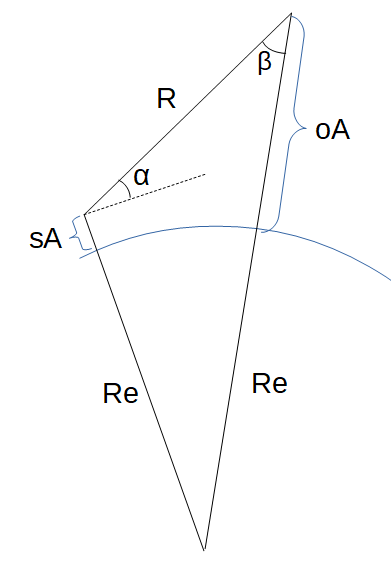SNR Gain Due to Range Processing (pulse compression)
Gr=Teff⋅BNLr
Tags | |
UUID | 491746a4-2da6-11e6-9770-bc764e2038f2 |
The Signal to Noise Ratio Gain due to Range Processing calculator computes the gain based on the effective pulse width, noise bandwidth and reduction in signal noise.
INSTRUCTIONS: Enter the following:
- (Teff) Effective pulse width of the radar
- (BN) Noise bandwidth at the antennae
- (Lr) Reduction in signal to noise ratio gain due to non-ideal range filtering.
Signal to Noise Ratio Gain due to Range Processing (Gr): The SNR gain is returned in decibels. However this can be automatically converted to a real via the pull-down menu.
The Math / Science
The formula for the Signal to Noise Ratio Gain due to range processing (pulse compression) is:
Gr= Teff⋅BNLr
where:
- Gr is the Signal to Noise Ratio Gain due to range processing (pulse compression)
- Teff is the effective pulse width of the radar
- BN is the noise bandwidth at the antennae
- Lr is the reduction in signal to noise ratio gain due to non-ideal range filtering.
This equation calculates the SNR gain due to range processing (pulse compression)1 for monostatic synthetic aperture radar. This equation is most helpful in the context of calculating the Signal-to-Noise of a Synthetic Aperture Radar.

- SNR Gain Due to Azimuth Processing (coherent pulse integration)
- SNR Gain Due to Range Processing (pulse compression)
- Target Radar Cross Section
- Monostatic SAR Transmitter Antenna Gain Factor
- Radar Atmospheric Loss
- SAR Duty Factor
- Grazing Angle
- Slant Range
- Slant Range (Beta Angle)
- ^ Performance Limits for Synthetic Aperture Radar - Second Edition. Sandia National Laboratories, Albuquerque, NM. Printed February 2006.
This equation, SNR Gain Due to Range Processing (pulse compression), is used in 2 pages
Calculators
Collections
- Comments
- Attachments
- Stats
No comments |
This site uses cookies to give you the best, most relevant experience. By continuing to browse the site you are agreeing to our use of cookies.
